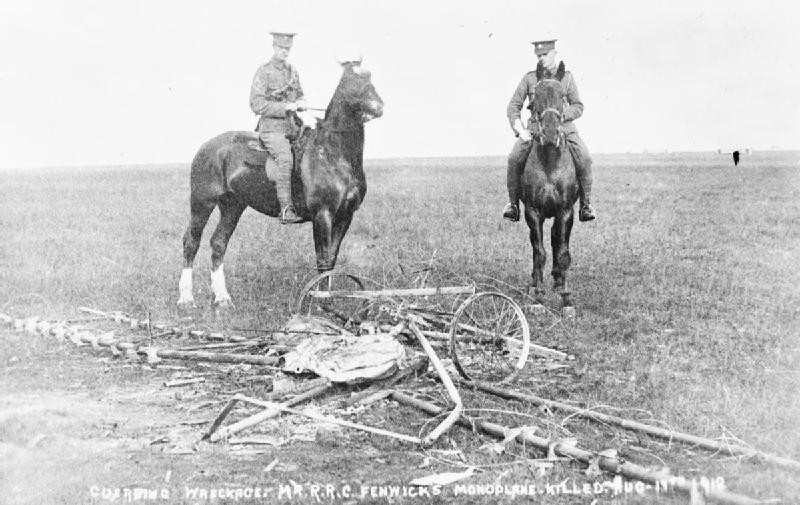
ASN Wikibase Occurrence # 217956
This information is added by users of ASN. Neither ASN nor the Flight Safety Foundation are responsible for the completeness or correctness of this information.
If you feel this information is incomplete or incorrect, you can submit corrected information.
| Date: | Tuesday 13 August 1912 |
| Time: | 18:15 LT |
| Type: | Mersey Monoplane |
| Owner/operator: | Robert Cooke Fenwick |
| Registration: | 19 |
| MSN: | 1 |
| Fatalities: | Fatalities: 1 / Occupants: 1 |
| Aircraft damage: | Destroyed |
| Location: | Larkhill, Salisbury Plain, 1 mile North of Stonehenge, Wiltshire -
 United Kingdom United Kingdom
|
| Phase: | En route |
| Nature: | Test |
| Departure airport: | Larkhill, Salisbury Plain, Wiltshire |
| Confidence Rating: |
The Mersey Monoplane was a prototype two-seat British pusher configuration monoplane of the early 1910s. A single example was built and entered into the 1912 British Military Aeroplane Competition but crashed during the trials and was destroyed.
The Mersey Monoplane crashed in the summer of 1912, but was rebuilt with the intent of entering it into the Military Trials which were to take place in August that year. The rebuilt aircraft had longer-span wings, larger tail surfaces and shorter tail booms, but retained the Isaacson radial engine.
The rebuilt aircraft flew successfully at Larkhill as part of the trials on 9 and 11 August, but when carrying out a third flight on 13 August in gusty weather conditions, dived into the ground from a height of about 200 feet (60 metres), killing the pilot. The accident was investigated by the Royal Aero Club, and was blamed on instability of the aircraft causing the pilot to lose control when it was caught in a powerful gust of wind.
Pilot and sole occupant - Robert Cooke Fenwick (aged 28) - was killed. Fenwick was designer and builder of the aircraft, which was deemed unstable by the Accident Investigation Committee. According to a contemporary report in Flight Magazine (August 17, 1912 page 756 - see link #3):
"FATAL ACCIDENT TO MR. R. C. FENWICK.
IT is a matter of supreme regret when any aviator should lose his life in the cause, but it is especially to be deplored that the military aeroplane trials should thus have been marred by a fatal accident. Mr. R. C. Fenwick, designer, constructor and pilot of the Mersey monoplane, took his machine out for the third time on Tuesday evening, about a quarter past six, and flew off in the direction of Stonehenge.
About a mile and a half from the sheds the machine was noticed to fly unsteadily, and the end of this unhappy effort was, by all accounts, a nose dive to earth at the termination of which Mr. Fenwick was killed and the aeroplane wrecked.
Few people, apparently, saw, or were in a position to see exactly, what happened, but from observations it was noted that the anemometer registered a sudden increase in gustiness about the time the machine started off on its last journey, while Busteed, who was flying the Bristol monoplane in that vicinity just previously, is similarly reported to have stated that the remous thereabouts were very bad.
The why and wherefore of the accident, however, it is the proper purpose of the Public Safety and Accidents Investigation Committee of the Royal Aero Club to investigate, the debris having been thoroughly inspected by responsible persons before it was destroyed by fire. It is, however, to be hoped in this connection that in all cases of disasters of this character, discretion will be used as to the time when the wreckage may be turned into a bonfire, seeing that when a pilot loses his life the least that those living can do in his honour is to profit in all reverence by the lessons of his misfortune.
In all the principal aviation centres, representatives of the safety committee have been appointed by the Royal Aero Club and it is to be hoped that the military authorities, police and aerodrome managers will assist them in efficiently carrying out their work, and will at any rate, as we have suggested, avoid any wanton destruction of invaluable evidence for the sake of hypocritical sentiment.
The aviation world suffers a great loss by Mr. Fenwick's death ; he was a clever designer and an able pilot, which combination is none so common that we can afford to lose even one of any we have. The Mersey aeroplane on which the fatal accident occurred was No. 19 in the trials and had made only two previous ascents".
Sources:
1. http://www.rcawsey.co.uk/Acc1916.htm
2. https://en.wikipedia.org/wiki/Mersey_Monoplane
3. Flight Magazine August 17, 1912 page 756 at https://www.flightglobal.com/pdfarchive/view/1912/1912%20-%200756.html
4. The Royal Aero Club of the United Kingdom: Official Notices to Members. Flight 21 September 1912, pages 852–853 at https://www.flightglobal.com/pdfarchive/view/1912/1912%20-%200852.html
5. Bruce, J.M. The Aeroplanes of the Royal Flying Corps (Military Wing). London: Putnam, 1982. ISBN 978-0370300849.
6. Lewis, P. British Aircraft 1809-1914. London: Putnam, 1962.
Media:
 Two mounted soldiers look at the burnt out wreckage of Mr R R C Fenwicks monoplane. Note that very little remains of the aircraft because of the fire and the flammable nature of most of the materials used in its construction.
Two mounted soldiers look at the burnt out wreckage of Mr R R C Fenwicks monoplane. Note that very little remains of the aircraft because of the fire and the flammable nature of most of the materials used in its construction.Revision history:
| Date/time | Contributor | Updates |
|---|---|---|
| 17-Nov-2018 00:25 | Dr.John Smith | Added |
| 17-Nov-2018 00:28 | Dr.John Smith | Updated [Embed code] |
| 17-Nov-2018 00:30 | Dr.John Smith | Updated [Source] |
| 19-Nov-2018 21:12 | Dr.John Smith | Updated [Embed code] |
Corrections or additions? ... Edit this accident description
The Aviation Safety Network is an exclusive service provided by:


 ©2024 Flight Safety Foundation
©2024 Flight Safety Foundation